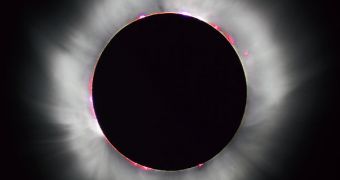A single speck of lunar zirconium is all it took for geologists to pinpoint the exact age of the Moon, after countless controversies between proponents and critics of various lunar formation theories. The small sample was brought back by the Apollo 17 mission all those years ago, but, at the time, the technology to properly date the rock fragments was not yet available.
Now, scientists at the University of Notre Dame, Indiana, led by Clive Neal, were able to date it using the most advanced techniques, and confirm that the sample is 4.42 billion years old, which supports the theory that states that our natural satellite was formed following a huge impact between Earth and another large celestial body.
The sample was found by Alexander Nemchin from the Curtin University of Technology in Perth, Australia, and is different from other lunar samples in that it doesn't come from the plains of the satellite, which are subjected to meltdown on account of asteroid impacts, but from the highlands, where the minerals were formed shortly after the new celestial body took shape. "It's serendipitous to find this, and really emphasises the [value] of sample returns," Neal says.
Up to this point, other zirconium samples have been dated to be around 3.90 to 4.35 billion years old, which is roughly the same age as the oldest bits of this mineral found on Earth. But the new batch is older than any zirconium found on our planet, which further sustains the theory that the Moon is Earth's offspring.
The huge impact that generated the Moon is thought to have occurred sometime between 10 and 100 million years after the formation of our solar system. The planets that would take shape later were still pretty much molten, or at least not fully solidified. The theory holds it that a Mars-sized object struck Earth, and the enormous amounts of debris thrown in orbit never managed to escape the Earth's gravitational pull, and thus formed the Moon.
Scientists and geologists maintain its natural lunar samples are older than the Earth ones, simply because the satellite cooled a lot faster than our planet did, after the collision, on account of its smaller size. Earth needed a few extra million years to reach the same state, which is the time frame to which the oldest known zirconium samples from our planet date.

 14 DAY TRIAL //
14 DAY TRIAL //